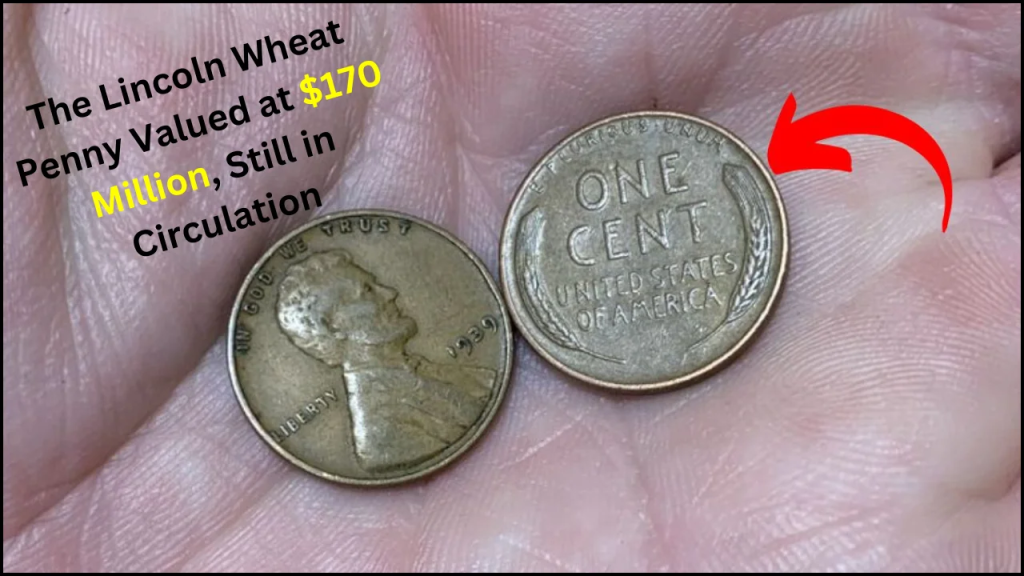
The Lincoln Wheat Penny, a small yet iconic coin, represents a critical piece of American history. First minted in 1909, it marked the centennial of President Abraham Lincoln’s birth, becoming one of the most recognized coins in the United States. While the penny’s typical value is nominal, rare variations like the 1943 copper penny are worth extraordinary sums due to their historical context, rarity, and desirability among collectors. Let’s delve into the factors contributing to its immense value, historical significance, and the ongoing fascination it sparks among numismatists.
The Significance of the Lincoln Wheat Penny
The Lincoln Wheat Penny, designed by Victor David Brenner, features a portrait of President Abraham Lincoln on the obverse and two wheat stalks on the reverse. This design ran from 1909 to 1958, symbolizing the nation’s agricultural heritage. It was the first U.S. coin to feature a president, breaking from the tradition of abstract designs or allegorical figures. Its long production run and symbolic elements make it a treasured collectible for historians and coin enthusiasts.
Rare Variations and Their Appeal
While millions of these pennies were minted, certain years and variations are particularly valuable. These rarities include the 1909-S VDB penny, the 1955 Double Die penny, and the legendary 1943 copper penny, each with its unique backstory and appeal. These coins’ scarcity and the circumstances of their minting amplify their significance among collectors.
The Lincoln Wheat Penny Valued at $20 Million, Still in Circulation
The Lincoln Wheat Penny Valued at $130 Million, Still in Circulation
The Lincoln Wheat Penny Valued at $110 Million, Still in Circulation
Two Rare Bicentennial Quarters That Could Land You $85 Million
A $51 Million Lincoln Wheat Penny, The Rare Treasure Still Circulating
The 1943 Copper Penny: A Rare Error
In 1943, during World War II, the U.S. Mint faced a copper shortage and produced pennies using zinc-coated steel to conserve materials for the war effort. However, a few leftover copper planchets from 1942 were mistakenly used in the production process. These pennies, now known as the 1943 copper pennies, stand out due to their reddish-brown hue compared to the standard steel gray coins of that year.
The rarity of these coins makes them highly sought after. Experts estimate that only a few dozen exist, with some specimens fetching astronomical values. For example, a well-preserved 1943 copper penny was valued at an astonishing $170 million, due to its rarity, exceptional condition, and historical context.
Why Is It So Valuable?
- Rarity: Fewer than 20 of these coins are confirmed to exist, making them one of the rarest error coins in history.
- Historical Context: Produced during World War II, these pennies symbolize an era of economic and material sacrifices.
- Condition: The $170 million coin’s pristine state enhances its appeal to collectors.
- Collector Demand: Numismatists are willing to pay significant premiums for rare, historically significant coins.
Identifying the 1943 Copper Penny
Finding a 1943 copper penny in circulation is highly unlikely but not impossible. To identify one:
- Color: The copper penny is reddish-brown, contrasting with the silver-gray steel pennies of 1943.
- Magnet Test: Copper is non-magnetic, while the steel version will be attracted to a magnet.
- Date: Check the year on the coin. A 1943 penny that is copper instead of steel could be one of these rare specimens.
Other Noteworthy Lincoln Wheat Pennies
Apart from the 1943 copper penny, several other Lincoln Wheat Pennies hold significant value due to their rarity and unique features:
| Year | Variant | Value Estimate | Key Features |
|---|---|---|---|
| 1909-S VDB | First year with initials | $600 – $3,000+ | Limited mintage (484,000 coins). |
| 1955 | Double Die | $1,000 – $125,000 | Misalignment in inscriptions and date. |
| 1944 | Steel Penny | $75,000 – $125,000 | Mistaken use of leftover steel planchets. |
The Legacy of the Lincoln Wheat Penny
More than just currency, the Lincoln Wheat Penny represents American history, craftsmanship, and culture. As a tribute to President Lincoln, the coin’s enduring legacy reflects the values he embodied. Collectors treasure these coins not only for their monetary value but also for their connection to pivotal moments in U.S. history.
FAQs
Q1: Why is the 1943 copper penny so rare?
Ans: The 1943 copper penny was a minting error during World War II when pennies were supposed to be made from zinc-coated steel. A few leftover copper blanks from 1942 were accidentally used, making these coins extremely scarce.
Q2: How can I check if my 1943 penny is valuable?
Ans: Look for the reddish-brown color indicative of copper. Test it with a magnet—steel pennies will stick, but copper won’t. Confirm the year is 1943; if so, it may be worth authenticating through a professional grading service.
Q3: What makes other Lincoln Wheat Pennies valuable?
Ans: Variations like the 1909-S VDB or 1955 Double Die are valuable due to limited mintage, production errors, and collector demand. Their historical significance and rarity drive their worth.
Conclusion
The Lincoln Wheat Penny stands as a symbol of American heritage and numismatic intrigue. While most are worth little more than face value, rare examples like the 1943 copper penny command staggering prices, blending rarity, historical importance, and collector enthusiasm. Even though finding such treasures in pocket change is unlikely, the enduring fascination with these coins underscores their place in the narrative of U.S. history. For collectors and history buffs alike, Lincoln Wheat Pennies serve as a tangible connection to America’s past and an enduring reminder of its rich traditions.


